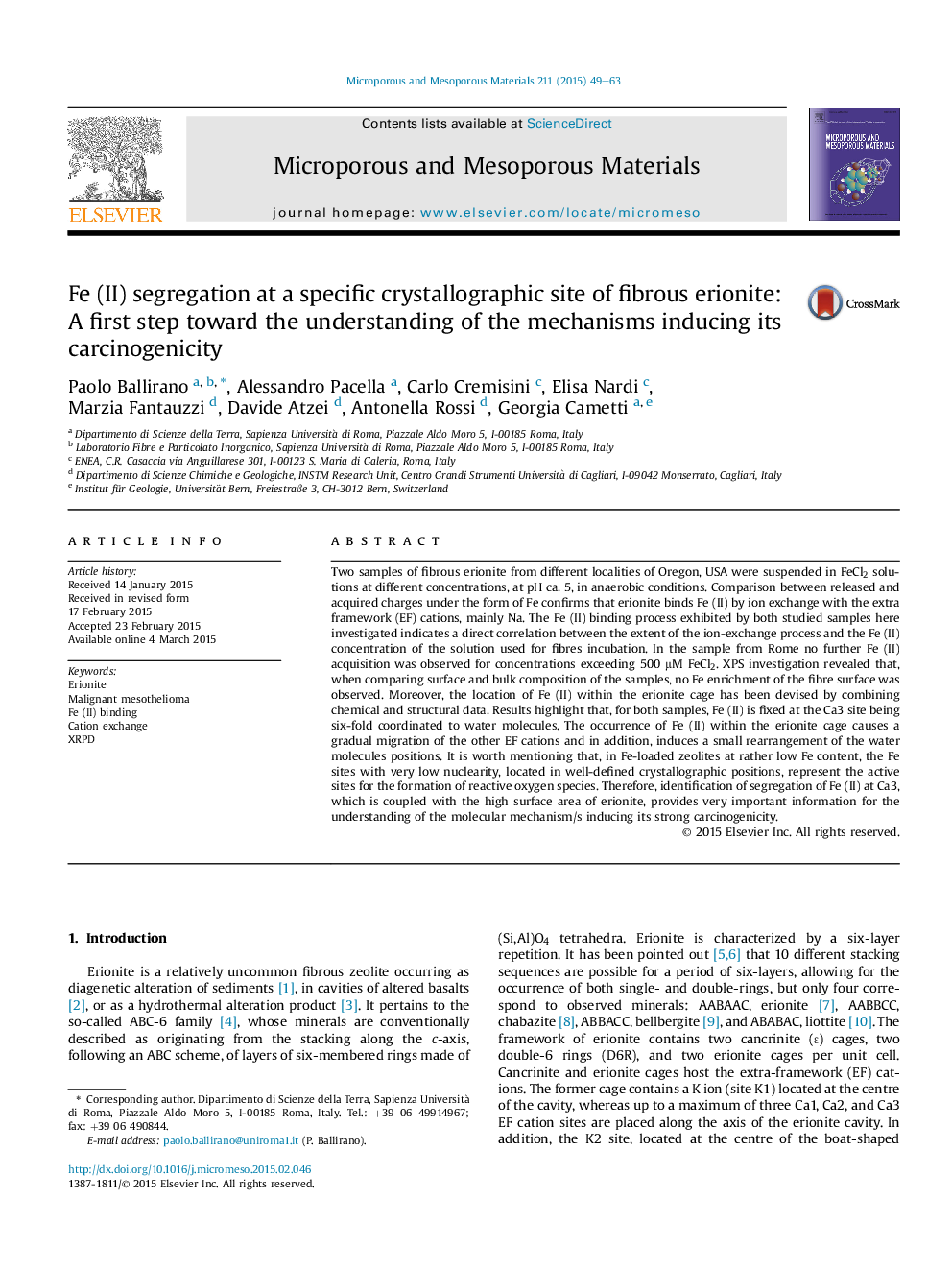| کد مقاله | کد نشریه | سال انتشار | مقاله انگلیسی | نسخه تمام متن |
|---|---|---|---|---|
| 72600 | 49027 | 2015 | 15 صفحه PDF | دانلود رایگان |

• Fibrous erionite was suspended in FeCl2 at pH ca. 5 in anaerobic conditions.
• Erionite binds Fe (II) by ion exchange with the extra framework (EF) cations.
• Fe (II) is fixed at the Ca3 site being six-fold coordinated to water molecules.
• Fe sites with low nuclearity form ROS in Fe-loaded zeolites.
• Those results are crucial to understand the mechanism/s inducing carcinogenicity.
Two samples of fibrous erionite from different localities of Oregon, USA were suspended in FeCl2 solutions at different concentrations, at pH ca. 5, in anaerobic conditions. Comparison between released and acquired charges under the form of Fe confirms that erionite binds Fe (II) by ion exchange with the extra framework (EF) cations, mainly Na. The Fe (II) binding process exhibited by both studied samples here investigated indicates a direct correlation between the extent of the ion-exchange process and the Fe (II) concentration of the solution used for fibres incubation. In the sample from Rome no further Fe (II) acquisition was observed for concentrations exceeding 500 μM FeCl2. XPS investigation revealed that, when comparing surface and bulk composition of the samples, no Fe enrichment of the fibre surface was observed. Moreover, the location of Fe (II) within the erionite cage has been devised by combining chemical and structural data. Results highlight that, for both samples, Fe (II) is fixed at the Ca3 site being six-fold coordinated to water molecules. The occurrence of Fe (II) within the erionite cage causes a gradual migration of the other EF cations and in addition, induces a small rearrangement of the water molecules positions. It is worth mentioning that, in Fe-loaded zeolites at rather low Fe content, the Fe sites with very low nuclearity, located in well-defined crystallographic positions, represent the active sites for the formation of reactive oxygen species. Therefore, identification of segregation of Fe (II) at Ca3, which is coupled with the high surface area of erionite, provides very important information for the understanding of the molecular mechanism/s inducing its strong carcinogenicity.
Figure optionsDownload as PowerPoint slide
Journal: Microporous and Mesoporous Materials - Volume 211, 15 July 2015, Pages 49–63